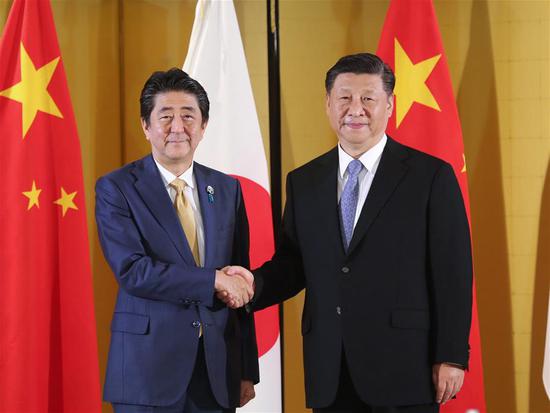China and the United States agreed on the sidelines of the G20 summit in Osaka, Japan, to restart economic and trade consultations on the basis of equality and mutual respect, after trade frictions since last year.
The easing of trade tensions between China and the United States came as no big surprise, as it is common wisdom that a trade war will not address the sticking points between the two sides, only dialogue can.
Maximum pressure tactics will not work when it comes to solve trade disputes between two major economies. There is only one track to reaching a deal between China and the United States: dialogue and cooperation.
The recent off-track scenario has only laid bare the very nature and importance of the relations of the world's two largest economies.
China and the United States, after decades of engagement on all fronts, are so interconnected that it is just impractical and impossible to disentangle them. Nobody knows this better than U.S. companies which rely on the Chinese market for production and sales. Any attempt to sever the two countries' economic and trade ties will prove painful and fruitless.
The China-U.S. trade frictions have sent jitters to global capital markets, disrupted multinationals' industrial chains, and weighed upon the economic growth of both countries and the world at large.
The World Bank lowered its 2019 and 2020 global economic growth forecasts in June, while the Conference Board data showed that U.S. consumer confidence fell in June to the lowest level since September 2017 as heightened trade tensions apparently took a toll on market sentiment.
That's why the voice against additional tariffs has been so loud in the United States, particularly among the business community.
The lesson should be learned. Domestic voices in the United States and global worries should be heard.
Of course, the truce doesn't necessarily mean a deal is imminent. But after so many rounds of talks as well as tit-for-tat measures, the United States should know better than before about China's fundamental principles and stance, and both are now more experienced and better equipped to manage their divergences.
Much work still needs to be done. It might take open-mindedness, patience and even compromises to work out a deal based on equality and mutual respect. History shows that the two countries can always navigate rough waters and keep moving forward.
Healed broken bones, if well set, become stronger. As long as China and the United States keep the dialogue on, there is hope for a balanced deal and a stronger bond. Please stay on track, and stay sincere.












